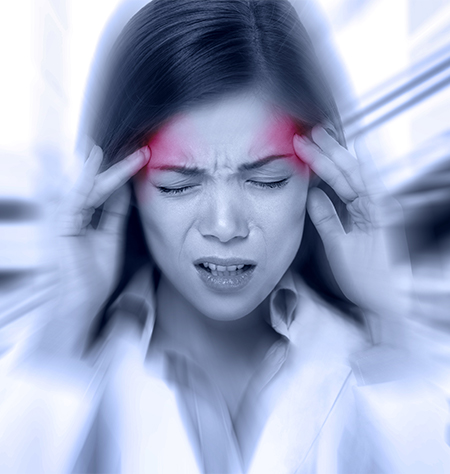 It’s hard to say what the worst part is.
It’s hard to say what the worst part is.
Maybe you can feel it coming.
It starts at the base of your skull – an annoying ache that has become all too familiar.
Before you know it, the front, side, or top of your head is throbbing. At that point, you’re done. Simply moving your eyes can be painful.
Or perhaps it’s the debilitating effects it has on your work.
It’s impossible to concentrate.
The pain can shut down your whole day. Forget productivity…
When those headaches come, the tension filling from your neck and to your eyes, you’re just trying to survive.
And it’s probably keeping you from enjoying other things you love.
Leading an active life when your neck is locked up, or you have pounding tension headaches feels like all but a dream.
Family events? Parties? Concerts? Everything with any amount of noise becomes a special kind of torture.
Sports? The gym? Those playful date nights? It’s suffocating to see the things you love drift out of reach because of the pain and restricted movement in your neck.
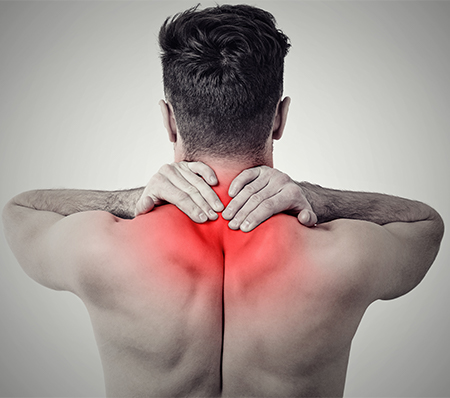 If you’re like most people…
If you’re like most people…
You’ve not sought treatment mainly because you don’t know where or when it’s time to go.
And maybe there’s a bit of fear and dread there. You’ve heard the stories, the back-and-forth provider rag-dolling as you get referred from one practitioner to another, none of them providing substantial relief or realistic answers to your questions and concerns.
Instead, you’ve probably resigned to a life of over-the-counter meds or occasional injections to “manage” the pain.
These things might temporarily relieve the symptoms, but they’re not addressing the source of your pain.
Migraines: They’re incapacitating and malicious!
If you’ve ever had one, I bet you’ve never forgotten it.
That feeling like your brain is going to explode…
It’s like someone’s banging a drum inside your head!
Migraines will have you reaching for painkillers, sleep aids, and everything else in the cabinet to bring SOME relief.
“How much can posture affect my migraines?”
A lot… because your posture directly affects the venous drainage of your brain.
The vertebral arteries travel up through the spine. These vessels are under a lot of pressure, so muscular tissue gives them the strength they need.
But veins are different…
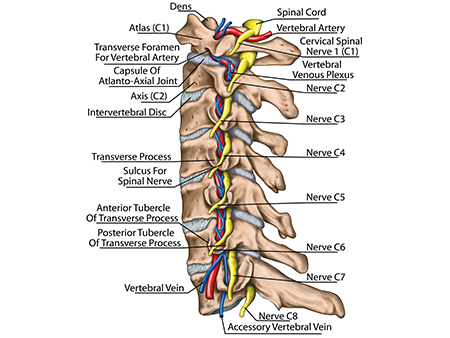 Vertebral venous plexus…
Vertebral venous plexus…
Vein walls are much thinner and much softer than arteries. What does this mean?
The venous plexus can become impinged if there is a postural distortion, such as rotated C1 and C2 vertebrae. Ever get a kink in a garden hose? What happens?
Your arteries don’t collapse under pressure, allowing more pressure into the brain than the veins can let out.
The pressure keeps pumping: pound, pound, pound… throb, throb, throb!
How do we fix it?
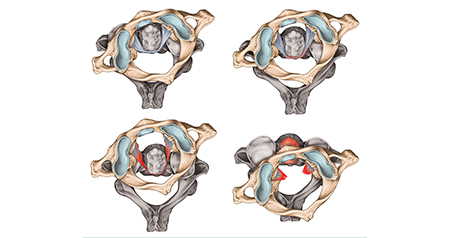 Neurosomatic Therapy: The postural approach…
Neurosomatic Therapy: The postural approach…
Neurosomatic Therapy will map your posture and address any imbalances.
By correcting distortions in the positions of the C1 and C2 vertebrae especially, many will feel improvements in their migraine symptoms.
Our posture can fall apart in many ways, but neurosomatic therapy can put you back on track and help you regain control of your life.
Tension-Type Headaches (TTH)
These are pains in the neck (literally)!
“Tech neck” is the leading cause of tension-type headaches (TTH) and neck pain.
Looking down…
Leaning forward toward a computer…
Endless hours working at home…
It leads you down the same path: poor posture, tension through your neck, trigger points, and a vengeful headache.
Let’s narrow this down further. Introducing the culprits of tension headaches…
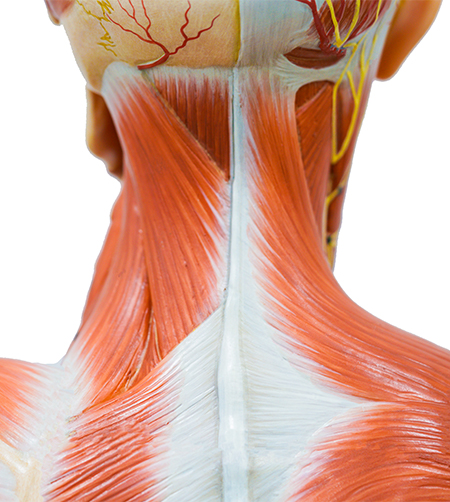 The Suboccipitals
The Suboccipitals
The suboccipital is a group of four muscles located beneath the occipital bone, right at the base of your skull.
These buggers are deep beneath the sternocleidomastoid, trapezius, splenius, and semispinalis muscles.
Small muscles with an important role, these little guys never stop working. Together, they extend and rotate the head.
They can become fiercely upset when overworked, whenever your head extends toward a computer screen.
The trigger points they develop will send a referral pain through the side of the head that extends toward the eyes and forehead.
Worse yet, the occipital nerve can become entrapped by those bigger muscles overtop of the occipitals.
Sternocleido, what now?
Sternocleidomastoid. We’ll make it easy and call it the SCM.
The SCM is a thick, powerful muscle that runs diagonally down the front of your neck, attaching from your sternum and collarbone to the temporal bone behind your ear.
SCM acts to turn your head to the opposite side and does its job very well.
However, this mobilizer can become overactive and chronically tight when forward head posture is present. This restricts the rotational range of motion, like looking over your shoulder in the car.
The SCM’s trigger points can be tender, and the referral pattern tends to wrap around the eye socket and even into the back of the eye. It can be brutal.
Upper Trapezius
The trapezius is a pretty cool muscle. Like a big diamond, it expands across almost the entire middle to the upper back.
When stress builds, this muscle (and a few others) tends to have your shoulders looking like ear muffs. The result? Occipital nerve entrapment. Headaches. More pressure and more tension.
Trigger points within the upper trapezius are located at the base of the neck and on the shoulders.
These trigger points can send powerful referral signals into the temple, along the back of the neck, and even cause pain sensations that feel like they are located in your brain!
Splenius Capitis
The Splenii muscles extend the head and neck.
When a forward head motion occurs, significant stress is put upon this muscle to compensate for the head’s weight.
For every inch you move your head forward, the weight of your head increases by 10 pounds. If your head is positioned just two inches further forward than where it should be, that is 20 pounds of additional pressure that this and other neck muscles need to compensate for.
This is an express lane to some angry trigger points, which send a referral pain to the top of the skull and toward the eyes.
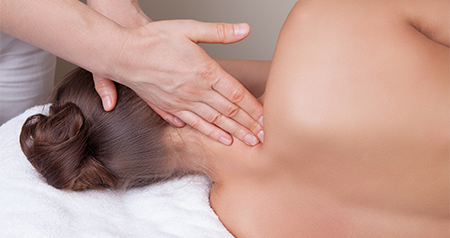 A tall order…
A tall order…
That’s a lot to digest. Don’t worry.
We will tackle this together.
Through trigger point therapy, myofascial release, and some active-release techniques, we will work as a team to release each trigger point, the surrounding myofascial tissue, and generalized tension.
Reclaim the life you want.
Let’s get started right now.
No more sleepless nights… no more debilitating headaches….
Call up the boys and start up those basketball games again.
Get back on your 6:30 AM gym routine.
Get through a day at work without headaches dragging you down (programming can be a headache enough!).
Let’s get started immediately. Get in touch, and let’s get you the relief you need and deserve: (801) 406-6577.


